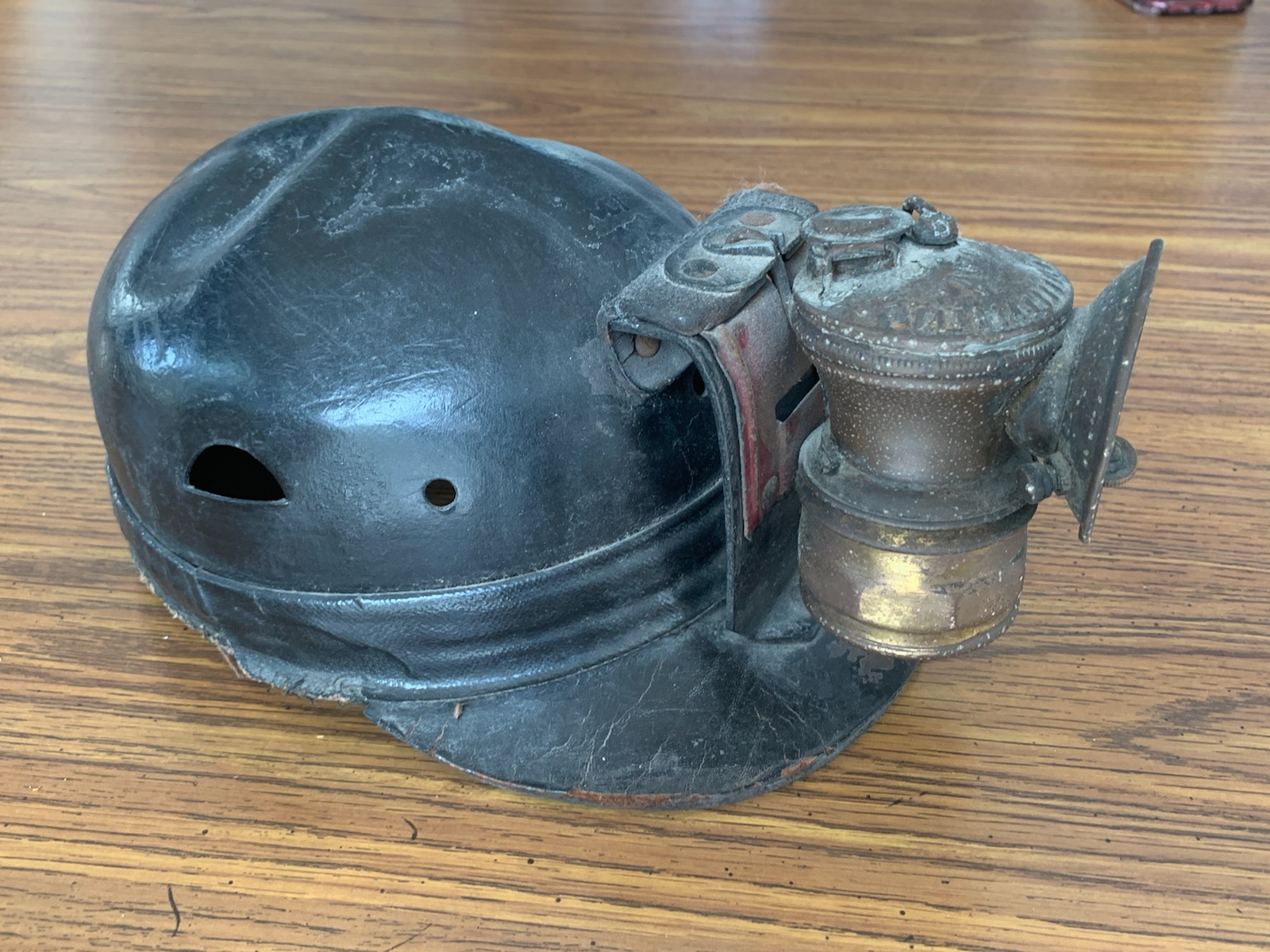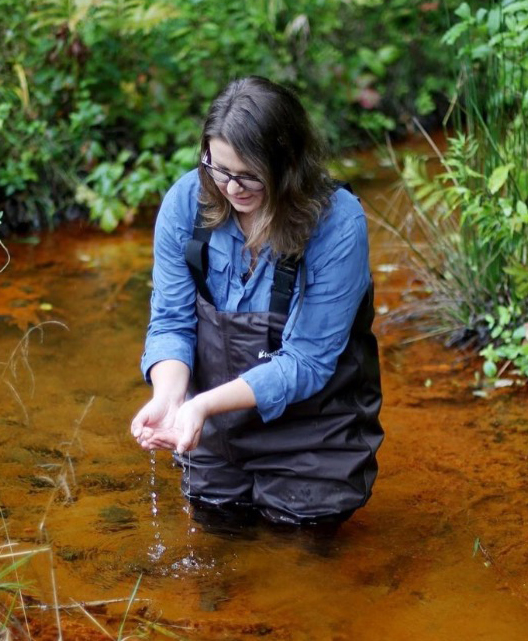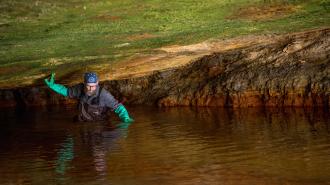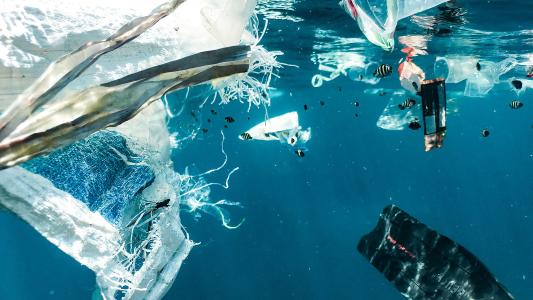My father’s grandfather worked the coal mines of Southeastern Ohio — family lore holds that he started as a child of only 9 or 10, that he and his father once had to dig his brother out of a collapsed wildcat mine, the owner of which had no interest in recovering the lost man.
By the time I was introduced to our ancestral hills, with pillbox homes perched on dizzying sharp climbs, the coal mine had long since led to the factory, and the factory had given way to the lab bench and now the writing desk. But it’s a vein, and veins run.
In my parent’s home, some of my great-grandfather’s belongings sit in a display, a reminder of our mining past: the lamp-bearing helmet, a lunch pail, a revolver — or what I like to think of as his union rep.
And to that memorial of a different, more difficult life, they were once considering adding a painting by John Sabraw (whose show I reviewed in my capacity as art critic).

The art in toxic water
Sabraw, an artist and art professor at Ohio University, along with fellow artists and scientists, is pulling pollution called acid mine drainage from the creeks of the hills and hollers.
This extremely acidic water runs orange and ghostly with heavy metals. But by extracting the pollutants, he can create not only pigments for his paints, but newly clean water to return to the streams.
Appalachian nonprofit Rural Action is now using the art exercise as the basis for True Pigments, a social enterprise selling the pollution-recovered paints through Portland-based Gamblin Colors, Good News Hub reported.
True Pigments’ proceeds will in turn support local communities and the restoration of Sunday Creek — whose namesake mine, the stories go, my great-grandfather once worked.
From pollution
Sabraw and Michelle Shively Maciver, True Pigment’s director of project development, bring Bloomberg’s cameras along on their harvest.
The acid mine drainage Sabraw scoops from one of the project’s pipes is considerably more viscous than the creek it was pulled from — a clay colored sludge choking the streams of Corning, Ohio, where my mining side lived.
The ochre ooze is the legacy of a coal mine closed for over a century, Bloomberg reported.
Artists and scientists are pulling pollution called acid mine drainage from the creeks of Ohio’s hills and hollers.
“When you leave a mine, and you just walk away from it, what happens is it fills up instantly with water,” Sabraw, who is also a technical consultant for True Pigments, told Bloomberg.
True Pigments says that around 6,650 miles of creeks in Pennsylvania, West Virginia, and Ohio run with acid mine drainage, including their own backyard, the Sunday Creek watershed.
There, the Truetown Discharge site forms the single largest source of the stuff in Ohio, sending millions of pounds of pollution into the creek each year and “decimating” the habitat for seven miles around.
In 2024, True Pigments hopes to open a larger site there, Bloomberg reports, pulling out pollution and returning clean water.
To paint
While the iron oxide in acid mine drainage can strip cricks of life, it’s also an ingredient in paint. They could also use the iron oxide for other products, Maciver says, including construction materials, cosmetics, and industrial coatings.
The team gathers up the iron oxide and smooths it out in troughs; it looks a bit like “pumpkin pie,” and it’s a good haul for the crew to film — 200+ pounds.
The iron oxide is turned into pigments for paints, and can find other uses as well, including in construction and cosmetics.
From there, the mining waste goes to their facility, where compounds that could mess with the pigment are diluted out. The pigment then dries and is sent to a large kiln, where the temperatures it is cooked to impact its final color. Gamblin uses the final pigments to make the paint.

“It still kind of shocks me that Sunday Creek is this orange mess. And it goes right through several communities, and it’s been doing it for 20 years,” Guy Reifler, a technical consultant for True Pigments and civil engineering professor at Ohio University who developed the water treatment process, told Bloomberg.
“And aside from us, nobody’s really doing anything about it.”
We’d love to hear from you! If you have a comment about this article or if you have a tip for a future Freethink story, please email us at [email protected].






